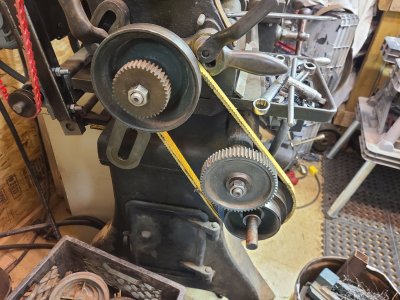Megar arc 5040dd
Super User
I am finally after years getting the the end of restoring my big old lathe from the late 1800's but I have run into a choice that I am not sure what to do. This lathe used to be run off of a line shaft and then someone made a very crude electric motor conversion. I redid the motor mound and am finishing up the new and now straight counter shaft but I am not sure what speed it should run at. For context this is a flat belt about 2 inches wide, the lathe is 16 inch swing with plain bearings that off the top of my head I would say are about 3 inches wide. The plain bearings are in absolutely beautiful shape and are made out of brass or possibly bronze but they look like brass to me. So my question is how fast should I spin the counter shaft? I don't know how fast a line shaft used to spin and really have know way of knowing if there was a speed reduction or increase from the line shaft the the original counter shaft. I want to be able to spin the lathe fast enough to be usable but not so fast that i risk damaging the headstock plain bearings. I am open to all suggestions.

